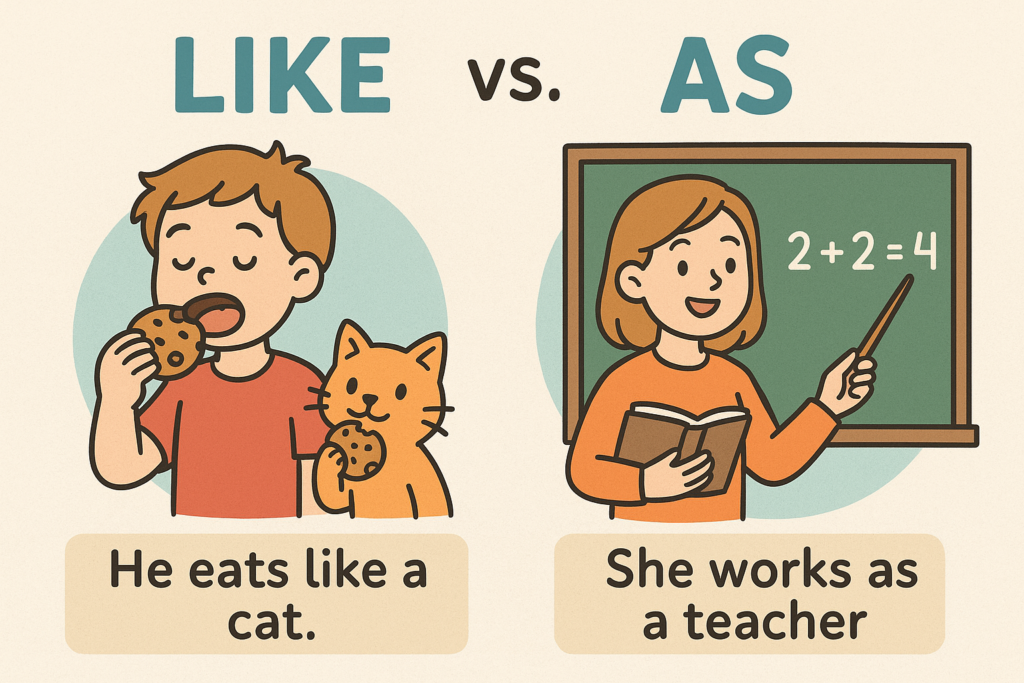In this lesson, we will focus on the differences between “like” and “as”, two words that are often confused in English. Understanding their correct usage will help you speak and write more accurately. Let’s dive into the details!

What is the difference between “Like” and “As”?
Key Differences:
- Like is used to compare nouns or noun phrases.
- As is used to compare actions or roles.
Let’s explore each one in detail.
Using “Like”
“Like” is a preposition that compares nouns or noun phrases. It means “similar to.”
Examples:
| Sentence | Explanation |
|---|---|
| She sings like an angel. | Compares “she” (a noun) to “an angel” (another noun). |
| It looks like rain. | Compares “it” (the weather) to “rain” (a noun). |
Common Mistake:
Do not use “like” when comparing actions. For example, “She runs like a cheetah does” is incorrect because it compares actions. Use “as” instead.
Using “As”
“As” is a conjunction that introduces a clause and compares actions or roles.
Examples:
| Sentence | Explanation |
|---|---|
| She runs as fast as a cheetah. | Compares the action of running (“runs”) to the action of a cheetah running. |
| He works as a teacher. | Describes the role or job (“teacher”). |
Common Mistake:
Do not use “as” when comparing nouns directly. For example, “She sings as an angel” is incorrect because it compares nouns. Use “like” instead.
Key Rules for “Like” and “As”
To summarize, here are the key rules for using “like” and “as”:
| Rule | Example |
|---|---|
| Use “like” for noun comparisons. | The weather is like winter. |
| Use “as” for action comparisons. | He writes as a professional would. |
| Use “as” for roles or jobs. | She works as a doctor. |
Common Expressions with “Like” and “As”
Here are some common expressions that use “like” and “as.” These are fixed phrases, so memorize them for better fluency.
Expressions with “Like”:
- Look like
- Feel like
- Sound like
- Taste like
Expressions with “As”:
- As if
- As though
- As well as
- Such as
Final Tips
- Remember: “Like” compares nouns; “As” compares actions or roles.
- Practice by listening to native speakers and identifying how they use “like” and “as.”
- Keep a journal of examples you encounter in real life to reinforce your understanding.
Now you’re ready to use “like” and “as” confidently! Keep practicing, and soon it will become second nature. 😊